Embarking on the journey of establishing your very own empire is without a doubt a hefty and daunting task. But for the famous Inca ruler Pachacuti, it was a fated endeavor. Through ruthless conquest and shrewd diplomacy, this legendary Inca figure managed to establish the Inca Empire and change the fate of this people forever. The story of Pachacuti’s rise to power and the expansion of his kingdom is unparalleled in ancient history, as he expanded his territory from a single city to a vast empire that spanned the whole of West South America, all during his life. Alas, just a few decades after Pachacuti’s achievements, the Spanish conquest of the area would change the fate of the Inca forever.
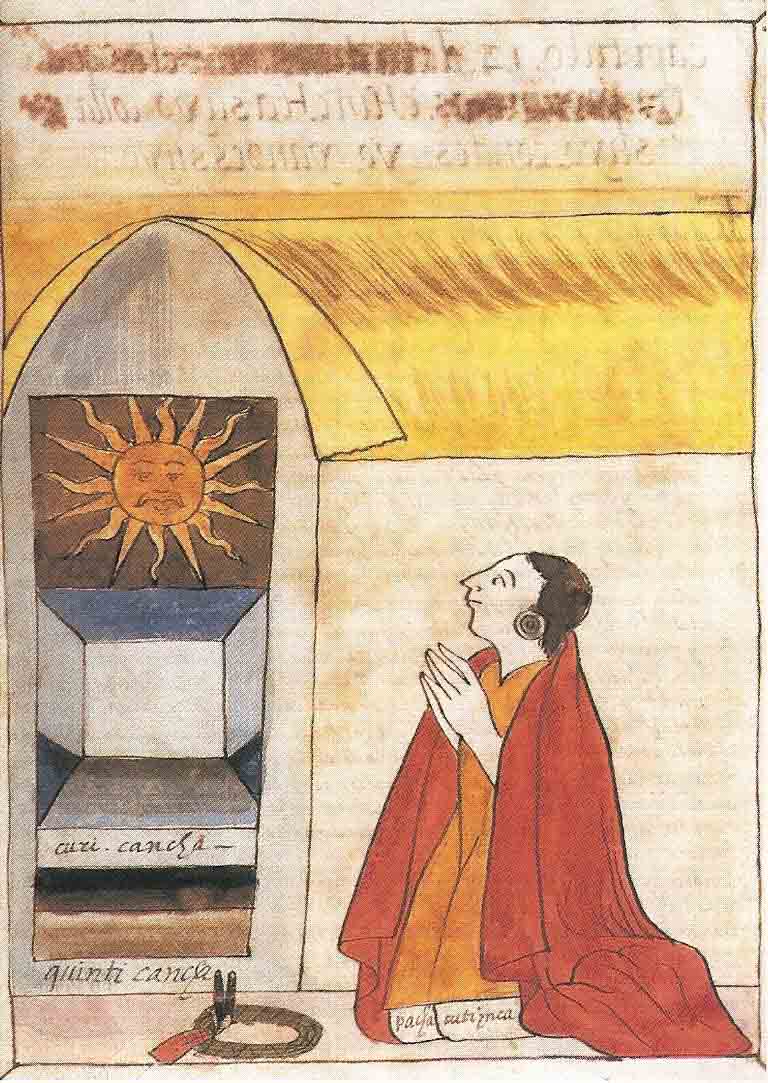
A painting of Pachacuti praying at the Temple of the Sun in Cusco. (Cronista Martín de Murúa / Public domain )
Fighting To Earn His Place: The Early Life Of Pachacuti
Pachacuti was known to the Inca as Pachacuti Inca Yupanqui, or Pachacutec, while his birth name was Cusi Yupanqui. He later took on the name Pachacuti, which roughly translated means “The Reverser of the World” or “Earth-Shaker,” signifying that his achievements literally turned the world of the Inca around.
He was born into the noble Inca Hanan dynasty, and was the son of the 8 th Sapa Inca, or the ruler of the kingdom of Cusco. His father was the famed Viracocha, a skilled and capable ruler that solidified the influence of Cusco over the territories it conquered. However, Pachacuti, as the younger son, was not to be the successor of his father, a fact that he wanted to change by any means. A chance for this finally occurred when the city of Cusco came under a major attack from the rival Chanca tribe .
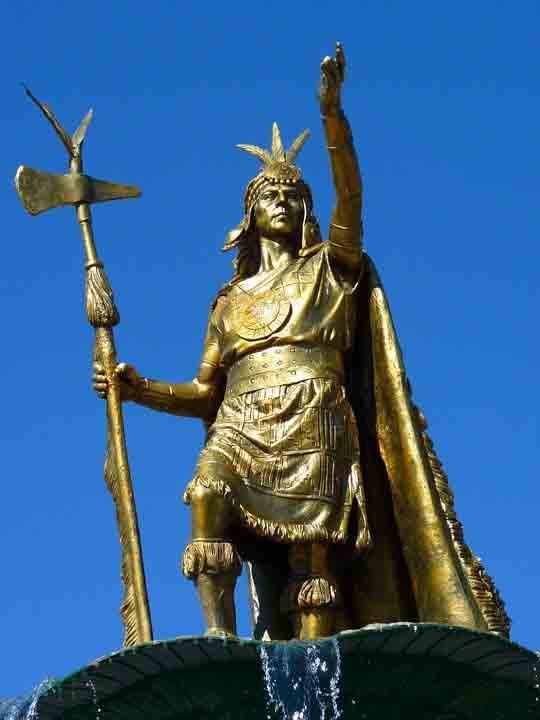
The Statue of Pachacuti can be found on the Plaza de Armas in Cusco. ( Pixabay)
Cusco began as a small Inca city state that developed in the 13 th century AD. Occupying the fertile Cusco valley in the Andean mountains, it was soon regarded as small and increasingly powerful kingdom, which kept growing. And that made it a big rival and a lucrative prize for competing tribes.
The Chanca were one of the several ethnic groups that inhabited the Andes, and dwelt to the west of Cusco, in the city of Andahuaylas. During the reign of Pachacuti’s father, Viracocha, the Chanca were his main rivals and their power increased dramatically. When the attack on Cusco finally came, Viracocha understood that he could not defend the city because the Chanca forces seemed overwhelming. Thus, both he and his successor and son, Inca Urco, fled in panic, leaving the city to its fate.
But Pachacuti remained. He recognized the potential to prove his worth as a ruler, and hastily rallied the panicked defenders and mounted a defense. The forces organized overnight and Pachacuti stood determined at their head. The legends state that he prayed that night to the Inca creator god, Viracocha, who appeared to him and vowed to lend him aid.
And aid he would need. The Chanca warriors, led by their chief Uscovilca, began a major, four-pronged assault on the city in the morning. It is said that Pachacuti and his band of followers fought with incredible resilience and resolve, although they were terribly outnumbered. Supposedly, the citizens of Cusco, including women and children, also joined in the battle for their city.
When the forces that had retreated from Cusco observed from the hills that Pachacuti was managing to hold off the attackers, they regained their courage and returned to help. With these reinforcements Pachacuti defended Cusco successfully, and achieved a major victory against the Chanca.
Desperate to prove himself to his father as a capable leader and successor, Pachacuti (known as Yupanqui at the time) offered him all the spoils of the battle. His father instead gave them to his successor Inca Urco, terribly insulting young Pachacuti. Nevertheless, the latter still wanted to prove his worth to the people.
He got his second chance pretty quickly as the Chanca were regrouping for a renewed assault and in larger numbers. Hearing of this, Pachacuti rushed with his forces to ambush them. This he achieved, finding the Chanca army while it was still encamped, and his surprise attack was brilliant. A fierce battle ensued and Pachacuti managed to behead the Chanca leader. Seeing this, the enemy broke and fled, with many dying while fleeing.
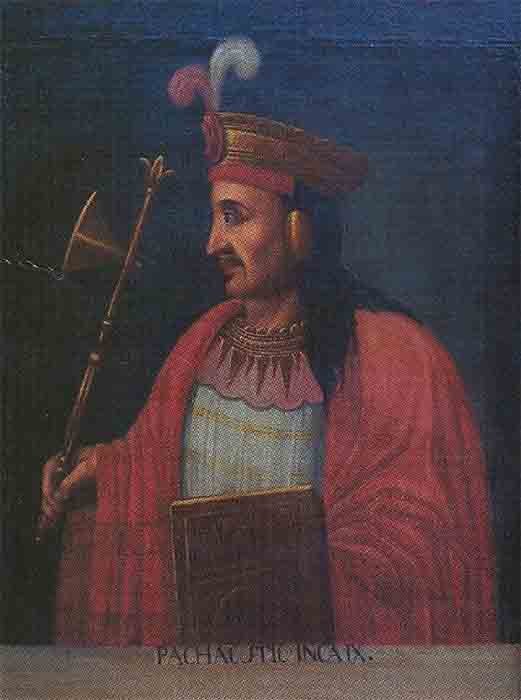
Emperor Pachacuti, the 9th Inca Sapa, who made the Inca Empire with his “own hands.” (Cuzco School / Public domain )
From Battle To Glory: Pachacuti Ousts His Father The King
Pachacuti returned to Cusco as a glorified hero. Not only did he defend the city, but he also landed a major defeat against the traditional Inca enemies, the Chancas. Regarding the events that unfolded at this time, the history is slightly hazy. It is known that his father – probably aged at the time – retreated to a small hill fort above Cusco, likely shamed. Legend say that he died there “out of sadness,” but it is more likely that he recognized Pachacuti as his new successor and abdicated around the year 1438, after his younger son had proven himself against the Chanca a second time.
Pachacuti had his older brother Inca Urco killed. However, some other sources state that he was not recognized by his father and crowned himself as the ruler of Cusco, the 9 th Sapa Inca, without his father’s permission. Either way, he maintained his position as the ruler of Cusco, with his father Viracocha dying around 1448.
Over the next twenty years Pachacuti would prove his worth as an outstanding ruler, a shrewd diplomat, and as an absolutely ruthless leader. He rebuilt and expanded the city of Cusco and began a series of conquests and expansions that would pave the way for the birth of the Inca Empire. In many ways, their “miraculous” victory over the superior Chanca army served as a boost to Inca morale.
The Inca army gained a reputation for having “divine support,” and for being unstoppable. But much of it was due to their superior armaments and well-developed tactics. An Inca warrior was arguably the best equipped one: with deerskin shield, slings, bone and copper maces and axes. And the overall size of the Inca army was a great form of “diplomatic” leverage that gave Pachacuti the upper hand he needed to expand his territories. This he did after the rebuilding of Cusco was finished.
Semi-legendary sources state that he assembled an army of one hundred thousand soldiers and marched them out of the city. Though this number does seem a bit blown out of proportion, it is still certain that Pachacuti mustered a great number of men, a number that would give him the advantage over the neighboring tribes and cities. Marching his army through the wild lands around Cusco laid the foundations of the famed Inca road network that quickly developed from then on. The army marked new routes, river fords, and crossroads at favorable and strategic locations. The expanding network of Inca roads were used to reach rival cities as fast as possible.
When Pachacuti reached the province of Vilcabamba, to the northwest of Cusco, the defenders of that city were astounded by the size of the Inca army. It is probable that Pachacuti relied on his tried and tested method of “negotiation”: he would offer meager gifts and state his demands, and if the other party would refuse, they had to face the vast Inca army.
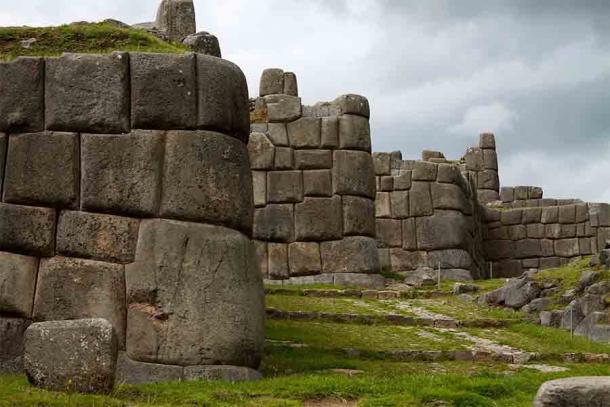
The ruins of the Inca temple fortress of Sacsaywamán, meaning “Contented Falcon” in Quechua. The defensive perimeter of this temple and other Inca defense systems often made use of giant stone blocks like these, some of which weigh more than a few tons (thousands of kilograms). The largest Inca stone block ever recorded weighed 70 tons or about 70,000 kg! (McKay Savage from London, UK / CC BY 2.0 )
The Inca Empire Expansion: City After City Is Conquered
Vilcabamba was originally aware of Pachacuti’s approach and well defended but its citizens decided not to fight when they saw the size of the Inca army. A legend states that the leader of Vilcabamba was so terrified of Pachacuti that he beheaded his best general who advised him to stand and fight.
After taking Vilcabamba without a fight, Pachacuti continued his expansion at a steady pace. He next confronted the Soras province of the Chanca, inhabited by the Soras People. They sought to resist the might of Pachacuti, but were subdued in no time, giving another territory to the Inca.
Next he marched his army to the north, reaching the tribesmen of Guamanga city who were notorious for their violent and warlike traditions. They sought to resist the Inca by all means and had to endure a long-lasting siege by Pachacuti’s forces, before finally surrendering due to hunger and thirst.
Next on Pachacuti’s list was the Jauja Valley further to the north and its inhabitants. Reaching them, he found an army of 30,000 warriors blocking his path. He led his warriors into a ferocious battle that earned him a difficult victory in the end.
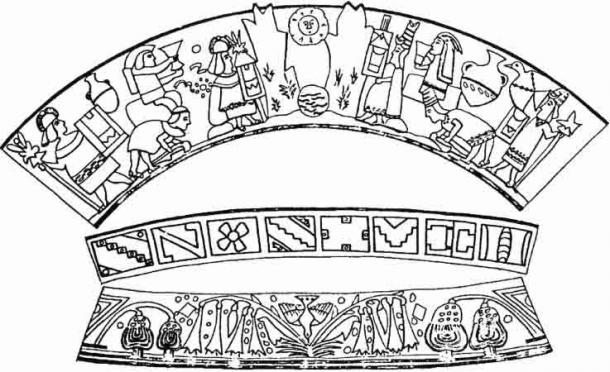
This ancient drawing shows Pachacuti meeting the chief of the Colla Kingdom. (Yuraq-yaku1 / CC BY-SA 4.0 )
After these northward expansions, Pachacuti turned his attention to the south east. He moved into the Lake Titicaca basin area. He also conquered this territory and, in the process, subdued the Lupaqa and Colla tribes. He then entrusted the rest of his conquest campaign to his son, Tupac Inca Yupanqui, while he himself retreated to Cusco to recuperate and to address the increasing administrative needs of his newly born empire.
Pachacuti’s son Tupac led the Inca army in the direction of Ecuador and started to fight with the rival Chimu civilization . Also falling under the Inca expansion were the people of Collasuyo province to the south east of Cusco.
Fighting the enormous army of the Colla tribe was one of the biggest challenges for the Inca army. One quote of Pachacuti supposedly originates in this battle, which lasted for an entire day. Seeking to bolster the morale of his troops, he exclaimed:
“Oh, Incas of Cusco! Conquerors of all the land! Are you not ashamed that people so inferior to you, and unequal in weapons, should be equal to you and resist for so long a time?”
After these conquests, Pachacuti could focus on governing his vast territory, which became the Inca Empire . He is known as a skilled diplomat and ruler and is credited with introducing numerous laws that helped to ensure the long-term domination of the Inca. This reveals that he had the ability to focus on future needs and strategies.
He established an administrative system for the entire empire that helped him to subdue all conquered rulers and ensure their loyalty. This was a sort of taxation system in which these rulers would pay tribute in sheep, cloth, maize, or simply gold, and continue to administer their own regions. Thus, Pachacuti laid the foundations of an elaborate administration that helped the Inca Empire to become established and survive for several generations.
Pachacuti is also credited with building Machu Picchu , the majestic Inca citadel located some 80 kilometers (50 miles) north of Cusco. It was most likely built as his personal estate.
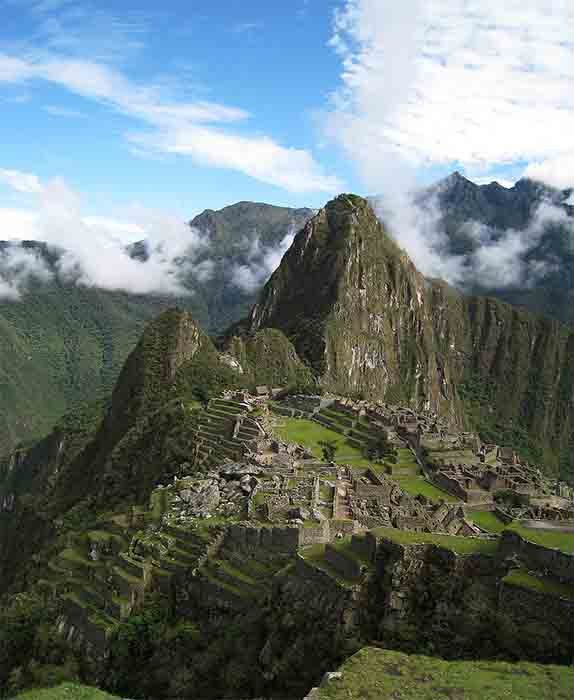
One of Pachacuti’s greatest gifts was the construction of the now world-famous Machu Picchu citadel, said to have been his private retreat. (icelight from Boston, MA, US / CC BY 2.0 )
From City State To Impressive Empire To Spanish Destruction
By the end of Pachacuti’s rule, his vast empire stretched from the city of Quito far to the north in modern day Ecuador, all the way south to the Lake Titicaca. It was an enormous territory that brought the wealth and power of the Inca to an entirely new level. And Pachacuti was the leader they needed to lead them to this glory.
Pachacuti was a brutal man. Death and human sacrifices were no strange thing in South American native cultures. This is perfectly showcased throughout Pachacuti’s rule: he executed two of his own brothers, Capac Yupanqui and Huayana Yupanqui, after a semi-successful military campaign in the province of Chinchay-Suyu, when some Chanca warriors rebelled and deserted.
He also executed two of his own sons, Auqui Yupanqui, and Tilca Yupanqui. His enemies did not fare any better: he was notoriously ruthless with captives, and rarely showed mercy, as was typical in South American native civilizations.
Pachacuti died around the year 1472 AD, seemingly from an illness. Like all previous Inca rulers, he was mummified, and his mummy was revered and paraded before his people annually. His mummy was later lost in the aftermath of the Spanish conquest .
When Pachacuti died, the entire empire mourned him for a whole year, and children were sacrificed throughout the empire. Also, around 3,000 llamas were killed: 2,000 at Cusco alone, and another thousand elsewhere.
But we need to wonder whether anyone beside the Inca people mourned this great ruler? His rule over subjugated tribes was highly authoritarian and oppressive, and he conducted numerous relocations of entire populations to suit his needs and repopulate empty parts of his empire.
Nevertheless, he stands out as a highly capable leader that managed to transform the small kingdom of Cusco into the sprawling Inca Empire, spreading the influence of this tribe with awe inspiring swiftness. And that feat places him at the very top of all ancient South American heroic figures.
Top image: Left; Statue of Pachacuti can be found on the Plaza de Armas in Cusco. Right; A digital creation of the magnificent Temple of the Sun in Cusco where Pachacuti must have called on the Inca sun god more than once in his prayers for the giant empire he created in his lifetime. Source: Pixabay) / Martinangel / CC BY-SA 3.0
By Aleksa Vučković
Related posts:
Views: 0
 RSS Feed
RSS Feed

















 March 20th, 2021
March 20th, 2021  Awake Goy
Awake Goy  Posted in
Posted in  Tags:
Tags: 
















